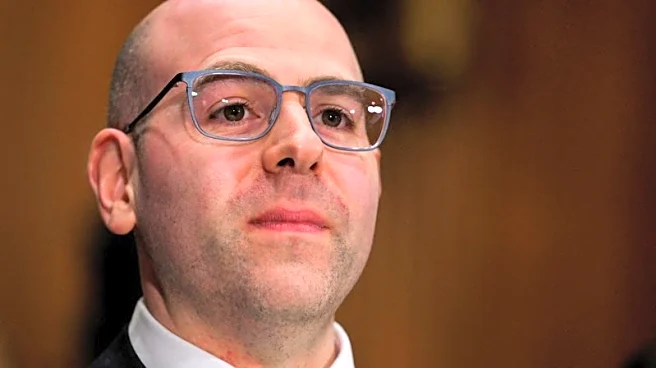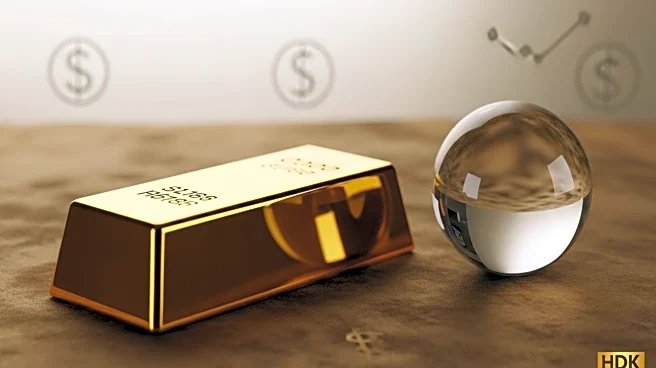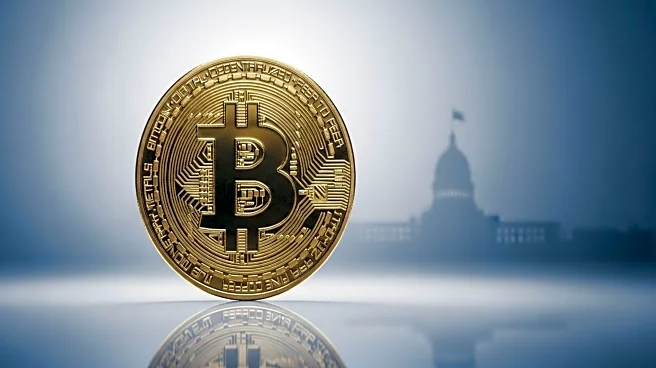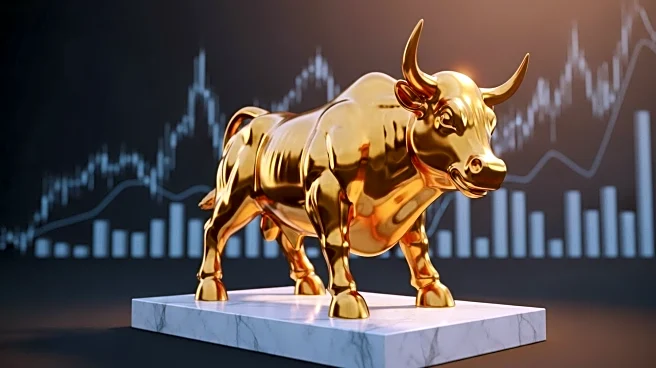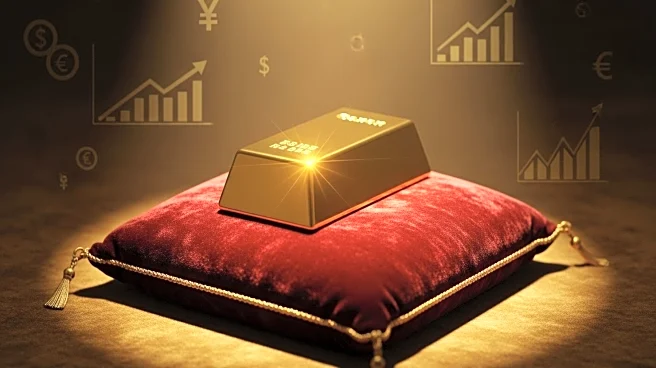What is the story about?
What's Happening?
Gold prices have reached a historic high, surpassing $3,900 per ounce for the first time. This surge is attributed to increased safe-haven demand due to the ongoing U.S. government shutdown and expectations of further Federal Reserve rate cuts. The yen's weakness following the Japanese LDP elections has also contributed to the rise, as investors seek alternatives to traditional safe-haven assets. Spot gold was up 1% at $3,925.91 per ounce, while U.S. gold futures for December delivery climbed 1.1% to $3,951.60. The Trump administration's economic policies and the potential impact on GDP are factors influencing the market, with Fed Governor Stephen Miran advocating for aggressive rate cuts.
Why It's Important?
The surge in gold prices highlights the market's response to economic uncertainties, particularly the U.S. government shutdown and potential GDP impacts. Gold is traditionally seen as a safe-haven asset during times of economic instability, and its rising value reflects investor concerns. The Federal Reserve's anticipated rate cuts could further influence the economy, affecting borrowing costs and investment strategies. This development is significant for investors, central banks, and retail buyers seeking to hedge against geopolitical and trade tensions. The increase in gold-backed exchange-traded funds and central bank purchases underscores the asset's growing appeal.
What's Next?
The Federal Reserve is expected to continue its rate cut trajectory, with additional cuts anticipated in October and December. This could further bolster gold prices, as non-yielding assets thrive in low-interest-rate environments. The Trump administration may face pressure to resolve the government shutdown to mitigate economic impacts. Investors will likely monitor these developments closely, adjusting their strategies based on fiscal and monetary policy changes. The ongoing geopolitical tensions and trade disputes may continue to drive demand for gold as a protective asset.
Beyond the Headlines
The rise in gold prices may have broader implications for global financial markets, influencing currency values and investment flows. As central banks increase their gold reserves, this could signal shifts in monetary policy and reserve management strategies. The economic policies of the Trump administration, coupled with the Federal Reserve's actions, may lead to long-term changes in investor behavior and asset allocation. The interplay between geopolitical events and economic policy will likely remain a key factor in shaping market dynamics.
AI Generated Content
Do you find this article useful?


